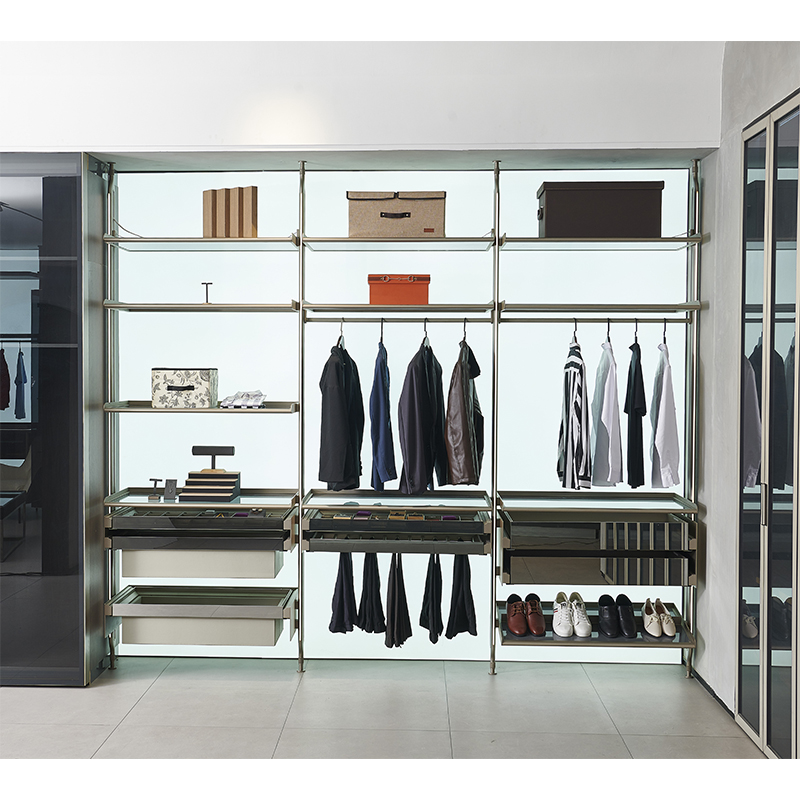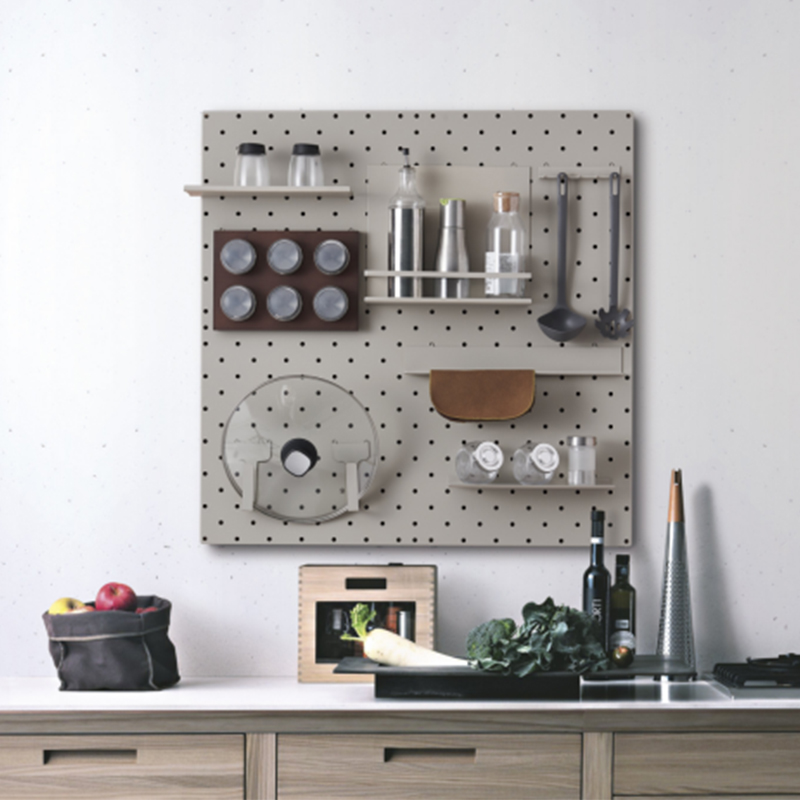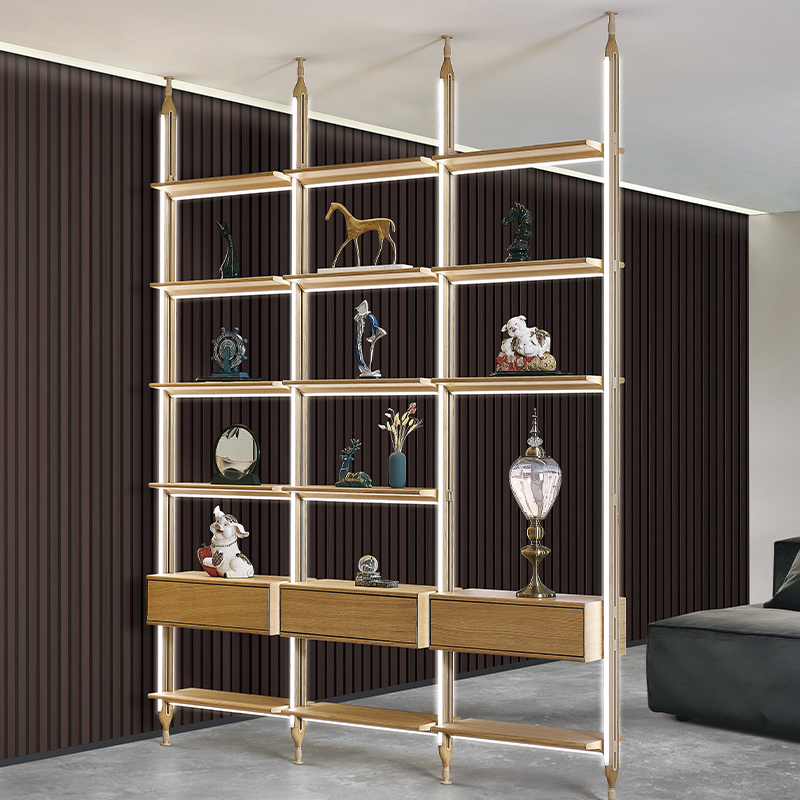How can the toughness of high-quality carbon steel pegboards and accessories be guaranteed?
Release Time : 2025-11-04
In the application of high-quality carbon steel in kitchen hardware pegboards and accessories, its toughness is closely related to material composition, processing technology, structural design, and usage environment. As a carbon structural steel between ordinary carbon steel and high-grade high-quality steel, high-quality carbon steel significantly improves the purity and uniformity of the material by precisely controlling the content of impurities such as sulfur and phosphorus, and employing open-hearth furnace smelting technology, laying the foundation for its toughness. A typical grade, such as Q235A, through a reasonable carbon content ratio (0.14%-0.22%) and the addition of manganese (0.30%-0.65%), ensures strength while avoiding the brittleness tendency caused by high carbon, making the material more likely to absorb energy through plastic deformation under stress, reducing the risk of fracture.
Heat treatment is a key step in optimizing the toughness of high-quality carbon steel. Normalizing or annealing after forming, by controlling the heating, holding, and cooling rates, can refine the grain structure, eliminate internal stress, and improve the material's ductility by 15%-20% compared to ordinary carbon steel. For example, the formation of acicular ferrite and quasi-polygonal ferrite benefits from the precise control of austenitic phase transformation during heat treatment. These microstructures, due to their interlocking structure and high dislocation density, effectively hinder crack propagation and improve low-temperature toughness. Furthermore, heat treatment can reduce material hardness, making it easier to process into complex shapes of perforated plates and accessories, such as bent hooks or stamped plates, while maintaining sufficient resistance to deformation.
Structural design must be coordinated with material properties to fully leverage the advantages of toughness. The hole shape, diameter, and spacing of the perforated plate must balance ventilation requirements with structural strength: large hole diameters provide good ventilation but weaken the plate's load-bearing capacity; small hole spacing increases strength but may restrict deformation space. Therefore, high-quality carbon steel perforated plates often employ a medium hole diameter and uniform hole spacing layout, ensuring ventilation while compensating for structural strength losses through the material's inherent toughness. Accessories such as hooks and supports are designed with rounded corners and reinforcing ribs to reduce stress concentration and prevent localized brittle fracture. For example, the curved parts of the hooks use large-radius rounded corners to distribute stress and prevent cracking caused by stress concentration.
Surface treatment is crucial for the long-term stability of toughness. The humid and oily environment of the kitchen easily leads to corrosion, which accelerates material fatigue and reduces toughness. High-quality carbon steel perforated panels and accessories are typically galvanized or painted: the galvanized layer provides sacrificial anode protection, delaying substrate corrosion; the paint forms a physical barrier, blocking moisture and oxygen. For high-temperature environments (such as areas near stoves), high-temperature resistant coatings can be used to prevent micro-cracks caused by differences in thermal expansion coefficients. Furthermore, surface treatment must balance adhesion and abrasion resistance to avoid coating peeling exposing the substrate, which can lead to localized corrosion and reduced toughness.
Maintenance during use also affects toughness performance. Regular cleaning removes oil and dust, preventing them from absorbing moisture and forming corrosive media; avoid using sharp tools to scratch the surface to prevent damage to the coating; handle with care during transport or installation to reduce hidden damage caused by impacts. For areas with slight rust, timely sanding and application of anti-rust paint are necessary to prevent further corrosion. In chronically damp environments (such as where cleaning tools are hung while still damp), improved ventilation is essential, or stainless steel fittings should be used instead to reduce the risk of toughness degradation.
From a material upgrade perspective, alloying is an effective way to further improve toughness. Adding elements such as nickel and manganese can significantly improve the low-temperature toughness of steel. For example, nickel lowers the ductile-brittle transition temperature, allowing the material to maintain good plasticity at low temperatures; manganese, through solid solution strengthening and deoxidation, improves the balance between strength and toughness. For high-end kitchen hardware, nickel-containing high-quality carbon steel or low-alloy steel can be used to adapt to more demanding usage scenarios.
Ensuring the toughness of high-quality carbon steel kitchen hardware perforated boards and accessories requires a multi-dimensional approach, encompassing material selection, process control, structural design, surface treatment, use and maintenance, and material upgrades. By precisely controlling impurity content, optimizing heat treatment parameters, rationally designing the structure, selecting corrosion-resistant coatings, standardizing usage behavior, and exploring alloying paths, the toughness advantage of high-quality carbon steel can be maximized, ensuring its long-term stable service in the complex environment of the kitchen.








